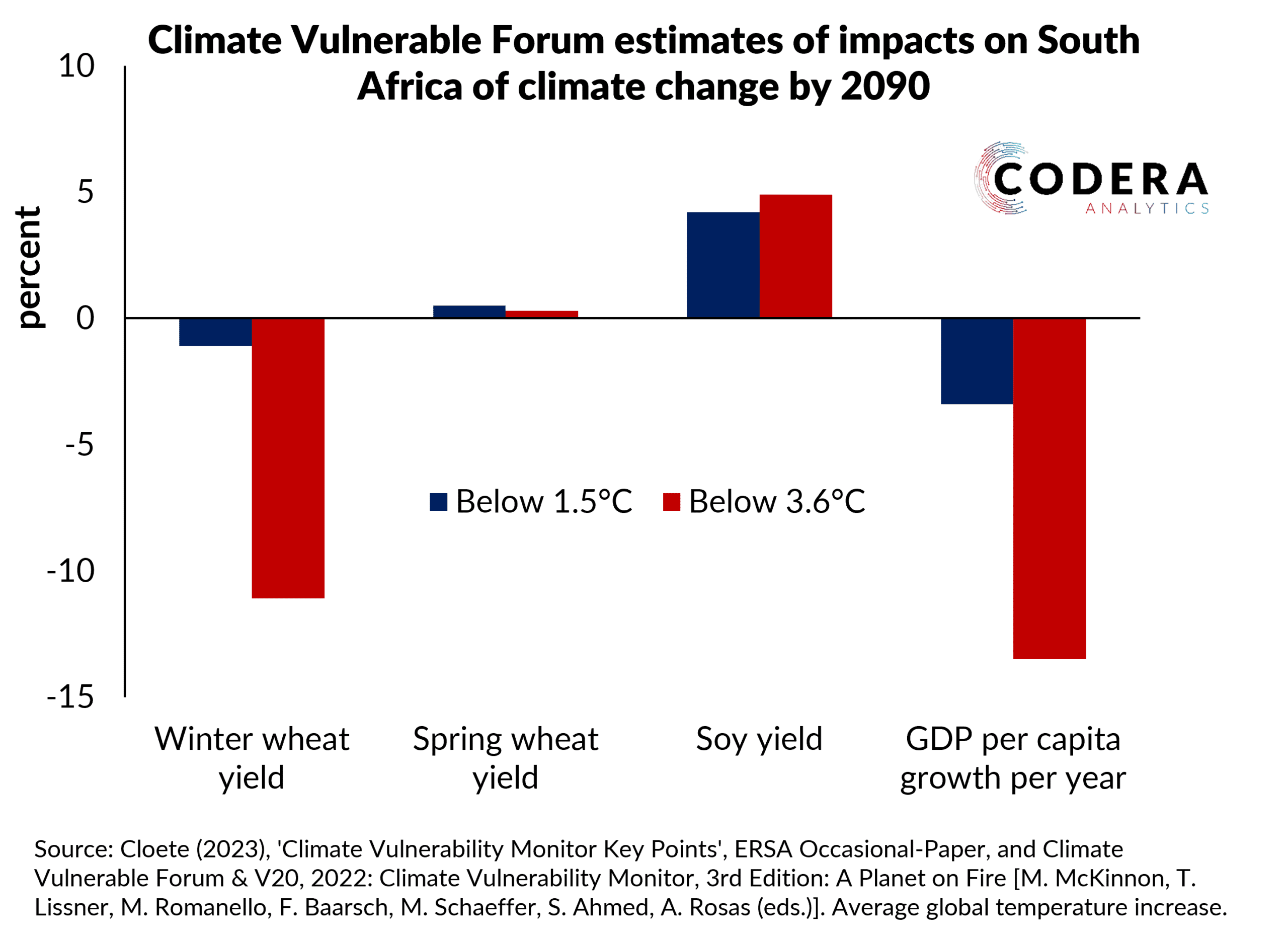A recent ERSA note summarises estimates from a Climate Vulnerability Forum report that predicts the following impacts of climate change on the South African economy:
- Between -1.1 and -11.1% lower winter wheat yield
- Higher spring wheat yields between 0.3 and 0.5%
- Higher Soy yield of between 4.2 and 4.9%
- Lower (presumably real) GDP per capita growth of -3.4 to -13% per year
depending on how much the average global temperature rises by 2090.

The report expects climate change to raise consumer price inflation on average in Southern Africa by between -0.6 and 2 percentage points by 2090, which combined with the impact on GDP, would be expected to increase interest rates in South Africa by an estimated 34 basis points.
These estimates might appear large, but are likely much smaller than the cumulative impact of existing factors weighing on South Africa’s growth such as electricity load-shedding, corruption or crime. Importantly, they are dwarfed by the actual decline in our GDP per capita over the last decade. This suggests that addressing the current constraints to South Africa’s economic and employment growth would likely score much higher in cost-benefit analysis of which policies to prioritise to improve long term prosperity. For a developing country like South Africa, the present value benefits of improving welfare through job creation or improving service delivery and the functioning of our state through governance reforms now would produce future benefits that would be much larger than these estimates of even the worst case impacts of climate change.
This is not to say that society should not take action to reduce climate change and mitigate its impacts. We need to recognise that making decisions about how to spend society’s resources over the very long term involve a variety of complex economic, social and ethical considerations that need to be weighed up. Policymakers must look not just at the future costs of expected outcomes when thinking about which policies to pursue, they must compare expected costs and benefits of different policy options in present value terms to enable them to assess policy interventions on a common basis.

